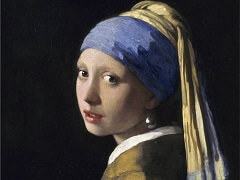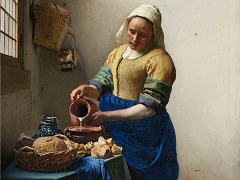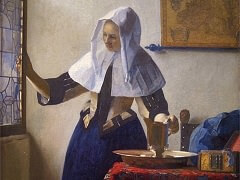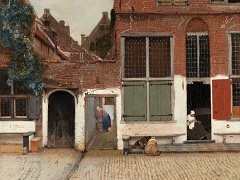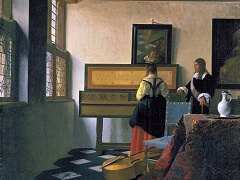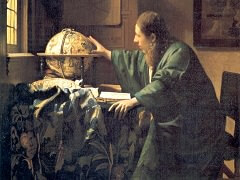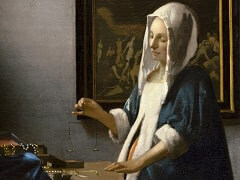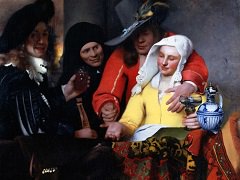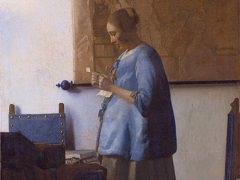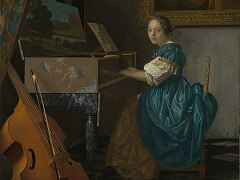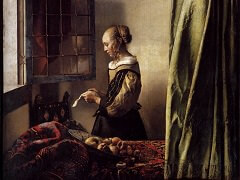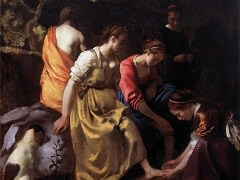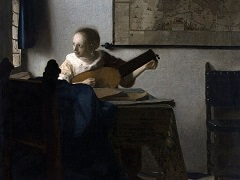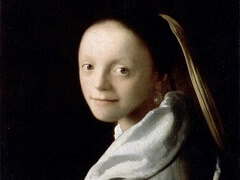The Lacemaker, 1669 by Johannes Vermeer

In this, one of Vermeer's most beloved paintings, a young bends over her work, tautly holding the bobbins and pins essential for her craft. Sitting very close to the foreground, behind a lacemaking table and a large blue sewing
cushion, Vermeer's devotes every ounce of her attention to this one activity, while the viewer peers in with equal intensity, mesmerized by her adeptness and artistic skill.
The viewer's emotional engagement is unique in Vermeer's oeuvre. The painting's intimacy, derived from its small scale, personal subject matter, and informal composition, draws the viewer to it, challenging the barrier between
image and reality; Vermeer suggests the total absorption in her task through her constricted pose and the bright yellow of her bodice, an active and psychologically intense color. Even her hairstyle conveys something or her
physical and psychological state of being, for it is likewise both tightly constrained and rhythmically flowing. Finally, the crisp accents of light that illuminate her forehead and fingers emphasize the precision and clarity of
vision required by this demanding craft.
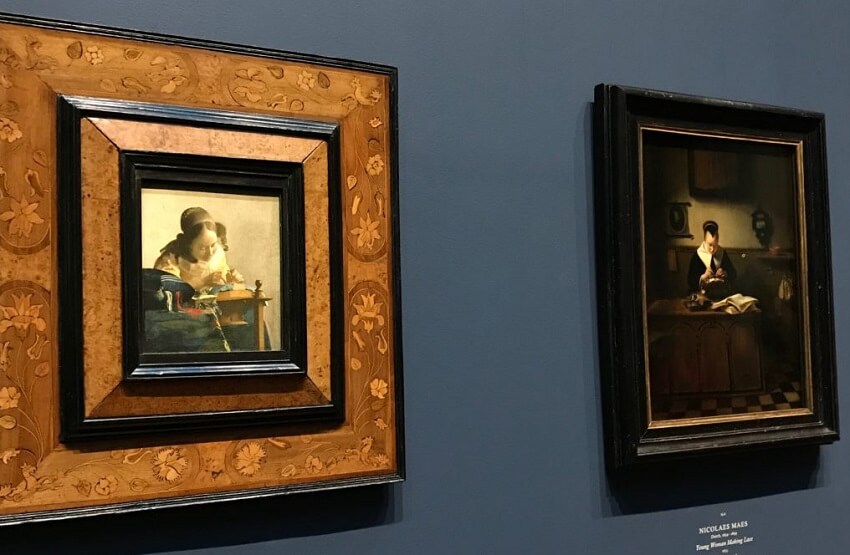
Vermeer further engages the viewer by simulating an optical experience that occurs when observing a scene closely different depths of field. In one of his most striking passages (upper right), Vermeer softly and fluidly applies red and white strokes of paint to create the illusion of diffused, colored threads flowing from the partially opened sewing cushion. Their liquid forms spill out onto the equally suggestive floral patterns of the table covering. By recreating this optical phenomenon, where forms situated nearest the ere appear diffused and unfocused, Vermeer pulls the viewer close the picture plane. At the same time, these diffused forms encourage the eye to pass over the foreground and to focus on the clearly defined middleground, consisting of the lace maker herself. A soft ringlet silhouetted against the white wall marks a more distant plane beyond the field of focus. Indeed, the threads and ringlet curl serve as a visual foil to the taut threads of the bobbins, thereby setting the 's activity apart from her surroundings.

